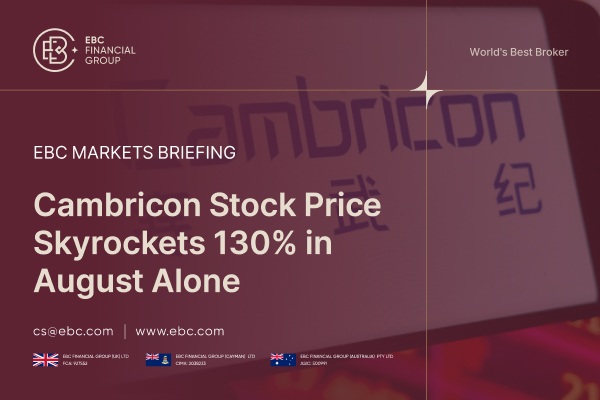To summarise, futures trading allows traders opportunities to speculate on the price movements of various assets, including commodities, currencies, and stock indiceshttps://www.ebc.com/forex/best-indices-to-trade-where-to-start-and-what-to-watch.
Understanding and implementing effective futures trading strategies is crucial for beginners navigating this complex market. This article delves into beginner-friendly futures trading strategies, providing insights to help new traders make informed decisions.
Understanding Futures Trading

At its core, futures contracts are standardised agreements to buy or sell an asset at a predetermined price on a specified future date. These contracts are traded on regulated exchanges and are commonly used for hedging or speculative purposes.
The leverage inherent in futures trading allows traders to control large positions with a relatively small amount of capital, amplifying potential gains and losses.
Key Concepts in Futures Trading
Before diving into strategies, it's essential to grasp some fundamental concepts:
Leverage: Futures trading involves leverage, allowing traders to control large positions with small capital. While this can amplify profits, it also increases the potential for significant losses.
Margin Requirements: Traders must maintain a minimum account balance, known as the margin, to hold futures positions. If the account falls below this level, a margin call occurs, requiring additional funds.
Contract Specifications: Each futures contract has specific details, including the underlying asset, contract size, expiration date, and tick size (the minimum price movement).
Beginner-Friendly Futures Trading Strategies

1) Trend Following Strategy
One of the most straightforward strategies for beginners is trend following. This approach involves identifying and trading in the direction of the prevailing market trend. Traders utilise technical indicators, such as moving averages, to determine the trend's direction and strength.
For instance, when a short-term moving average crosses above a long-term moving average, it may signal the beginning of an upward trend, prompting a buy decision.
Conversely, a crossover in the opposite direction might indicate a downward trend, suggesting a sell action. Trend following capitalises on the market momentum, aiming to ride the trend until signs of reversal appear.
2) Breakout trading Strategy
Breakout trading focuses on identifying key support and resistance levels and entering trades when the price breaks through these levels. A breakout above resistance may indicate the start of a bullish trend, while a breakdown below support could signal a bearish trend.
This strategy requires traders to monitor price charts closely and confirm breakouts with increased volume or other technical indicators to reduce the likelihood of false signals. Breakout trading can be particularly effective during periods of high market volatility when significant price movements are more likely.
3) Pullback Trading Strategy
Pullback trading involves entering a trade during a temporary reversal within a larger trend. After a significant price movement, markets often experience short-term corrections or pullbacks before resuming the primary trend. Traders look for these pullbacks as opportunities to enter the market at a more favourable price point.
For example, in an uptrend, a trader might wait for the price to retrace to a support level before buying, anticipating that the upward trend will continue. This strategy requires patience and a keen eye for identifying potential reversal points within the broader trend.
4) Spread Trading Strategy
Spread trading entails simultaneously buying and selling two related futures contracts to profit from their price difference.
It can involve contracts of the same asset with different expiration dates (calendar spreads) or different but related assets (inter-commodity spreads). Spread trading can reduce risk and volatility compared to outright positions.
5) Order Flow Trading
Order flow trading analyses the real-time flow of buy and sell orders to anticipate short-term price movements. By examining the market's depth (DOM) and time and sales data, traders can gauge market sentiment and identify potential reversals or continuations.
This strategy requires specialised tools and a deep understanding of market microstructure.
6) moving average crossover Strategy
The moving average crossover strategy is popular among beginners due to its simplicity. This technique involves two moving averages of different time frames on a price chart, such as a 50-day and a 200-day moving average. A buy signal is generated when the shorter-term moving average crosses above the longer-term moving average, indicating potential upward momentum.
Conversely, a sell signal occurs when the shorter-term moving average crosses below the longer-term moving average, suggesting downward momentum. This strategy helps traders identify trend reversals and make timely entry and exit decisions.
Developing a Trading plan and Risk Management
A well-structured trading plan is vital for success in futures trading. This plan should outline your trading goals, risk tolerance, and specific strategies. Key components include:
Entry and Exit Rules: Define clear criteria for entering and exiting trades based on technical indicators, fundamental analysis, or a combination of both.
Risk Management: Determine the maximum amount you're willing to risk on each trade and set stop-loss orders accordingly.
Position Sizing: Decide how much capital to allocate to each trade, ensuring diversification and limiting exposure to any position.
Key risk management include:
Setting Stop-Loss Orders: Predetermine exit points to limit losses on each trade.
Diversification: Avoid concentrating your capital in a single market or position.
Regular Review: Continuously assess your trading performance and adjust strategies as needed.
Conclusion
In conclusion, futures trading offers significant profit opportunities, but it also carries inherent risks, especially for beginners. By understanding and implementing beginner-friendly strategies, traders can navigate the market more effectively.
Lastly, you must embrace lifelong learning and adaptability to refine your strategies and improve your performance. As the saying goes, the secret to being successful from a trading perspective is to have an indefatigable and undying thirst for information and knowledge.
Disclaimer: This material is for general information purposes only and is not intended as (and should not be considered to be) financial, investment or other advice on which reliance should be placed. No opinion given in the material constitutes a recommendation by EBC or the author that any particular investment, security, transaction or investment strategy is suitable for any specific person.








